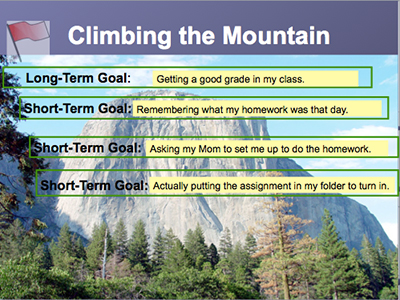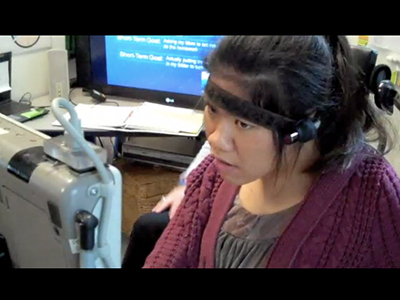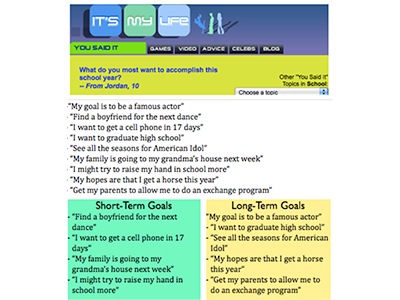Learning terms and concepts: Students explore characteristics of short-term and long-term goals and learn to differentiate between them through a variety of on-line and discussion activities.
Purpose
Students gain exposure to short-term and long-term goals set by other students their age and get practice differentiating between them.

Activity
Students review the characteristics of a goal as something someone wants to work toward achieving in a specified length of time. As a way to personalize this, the students think of something they want to achieve when they get home that afternoon as an example of a short-term goal. The mentor shares an example of how she identified a goal and broke it down into achievable short-term objectives (Climbing the Mountain activity from Steps to Self-Determination). Students then discuss something they want to achieve over the course of the school year as an example of a long-term goal.

Climbing the Mountain activity from Steps to Self-Determination
Students then explore a wide variety of goals posted by adolescent students on the pbskids.org, “It’s My Life” website. Students and mentors discuss the goals and determine which goals fit the criteria for a short-term goal and which goals fit the criteria for a long-term goal.

The mentor shares an example of her long-term goals.

Example of short-term and long-term goals.
Adaptations
- Students access the internet with their speech-generating devices using computer interface hardware and text-to-speech software that reads aloud web pages.
- During the discussion portion of the activity, students can generate their responses using their speech-generating devices, or they can use partner-assisted strategies with communication boards.

